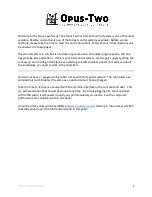
8
If the speed of rotation is within the range of the stroboscope, start at
the highest flash rate and adjust the flash rate down. At some point you
will stop the motion with only a single reference point of the object in
view. Note that at a flash rate twice the actual speed of the image you will
see two images (reference points). As you approach the correct speed you
may see three, four or more images at harmonics of the actual speed. The
first SINGLE image you see is the true speed. To confirm the true speed,
note the reading and adjust the stroboscope to exactly half this reading,
or just press the left of the joystick button for the ÷2 function. You should
again see a single image (which may be phase shifted with respect to the
first image seen).
For example, when viewing a shaft with a single keyway, you will see one
stationary image of the keyway at the actual speed and at 1/2,1/3,1/4,
etc, of the actual speed. You will see 2 images of the keyway at 2 times the
actual speed, 3 keyway images at 3 times, etc. (see Figure 5).
The Flash Per
Minute (FPM) equals the shaft’s Revolutions Per Minute (RPM) at the
highest flash rate that gives only one stationary image of the keyway.
Figure 5 Object Rotating at 3000 RPM
If the speed is outside the full scale range of the stroboscope (12,500
FPM), it can be measured using the method of harmonics and multipoint
calculation. Start at the highest flash rate and adjust the flash rate down.
Be aware that you will encounter multiple images. Note the flash rate of
the first SINGLE image you encounter, and call this speed “A”. Continue
decreasing the flash rate until you encounter a second SINGLE image, and
note this speed as “B”. Continue decreasing the speed until you reach a
third SINGLE image at speed “C”.










































